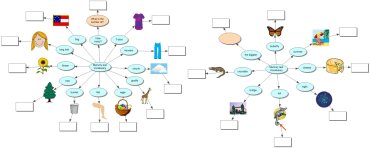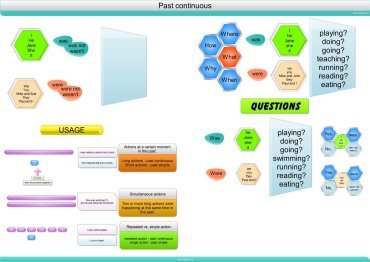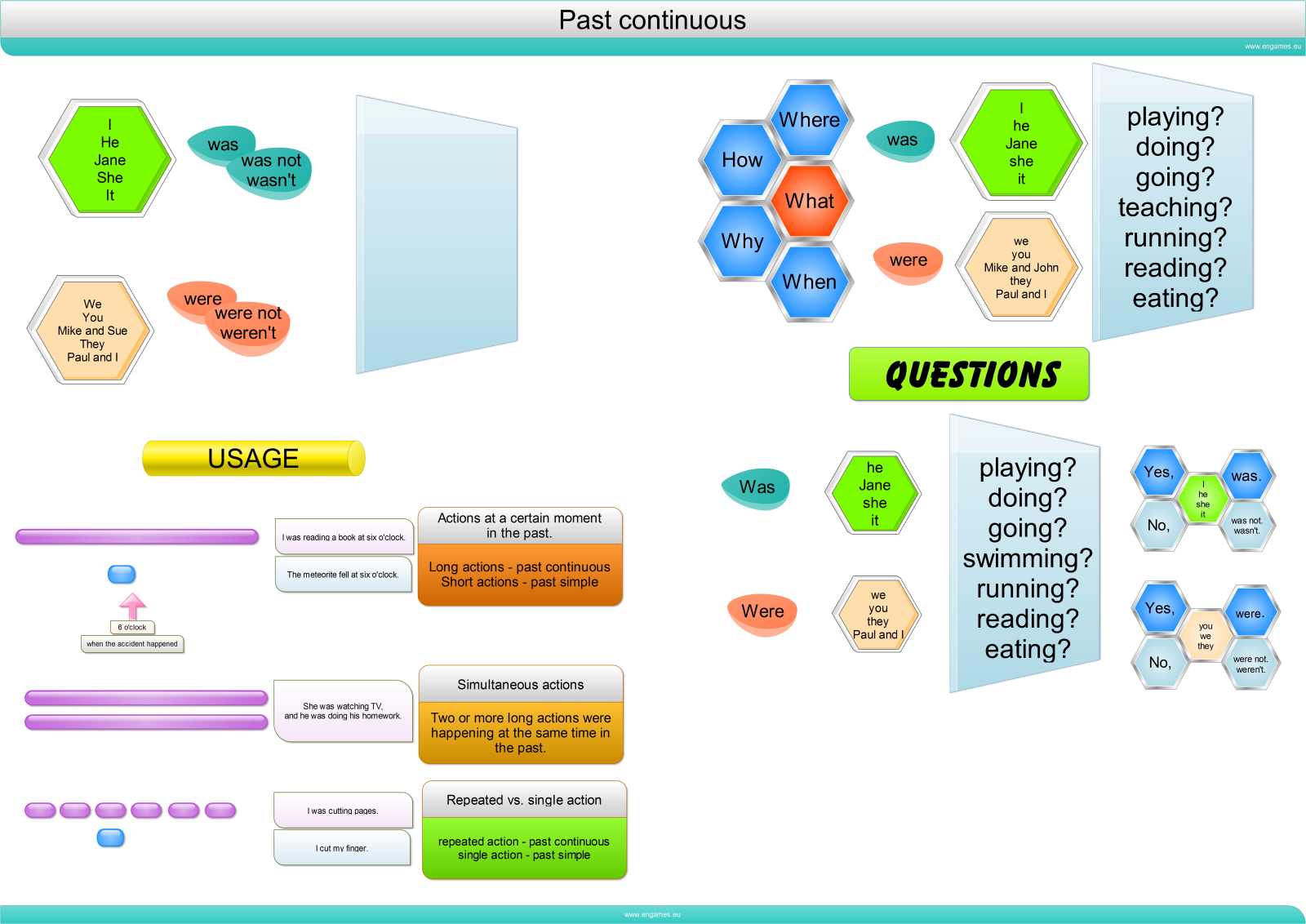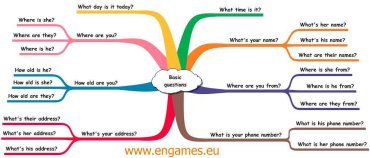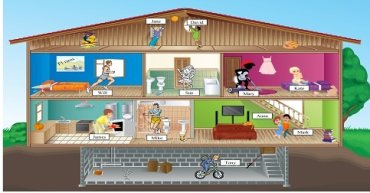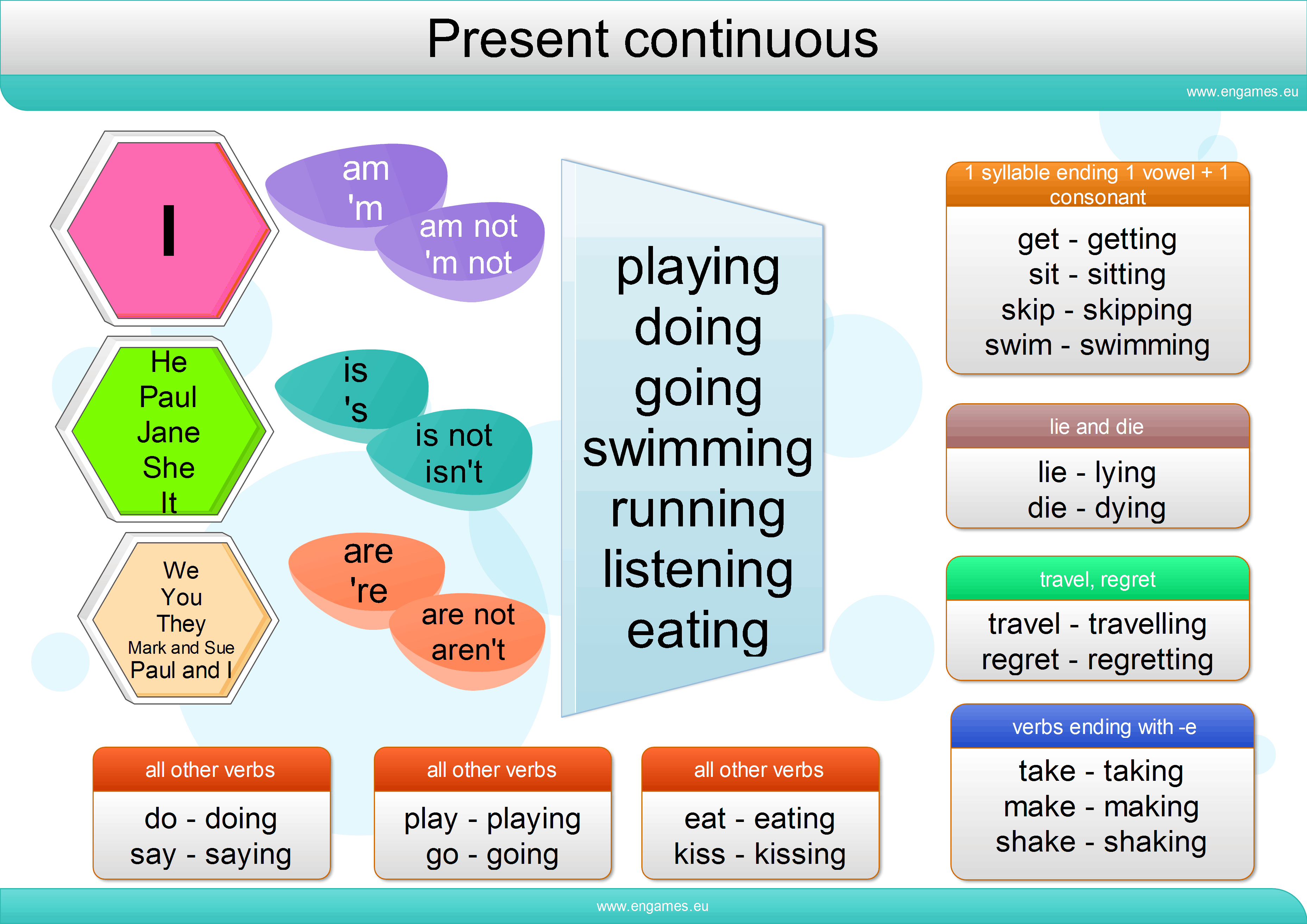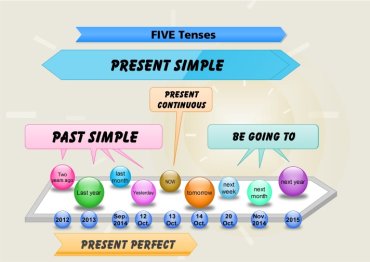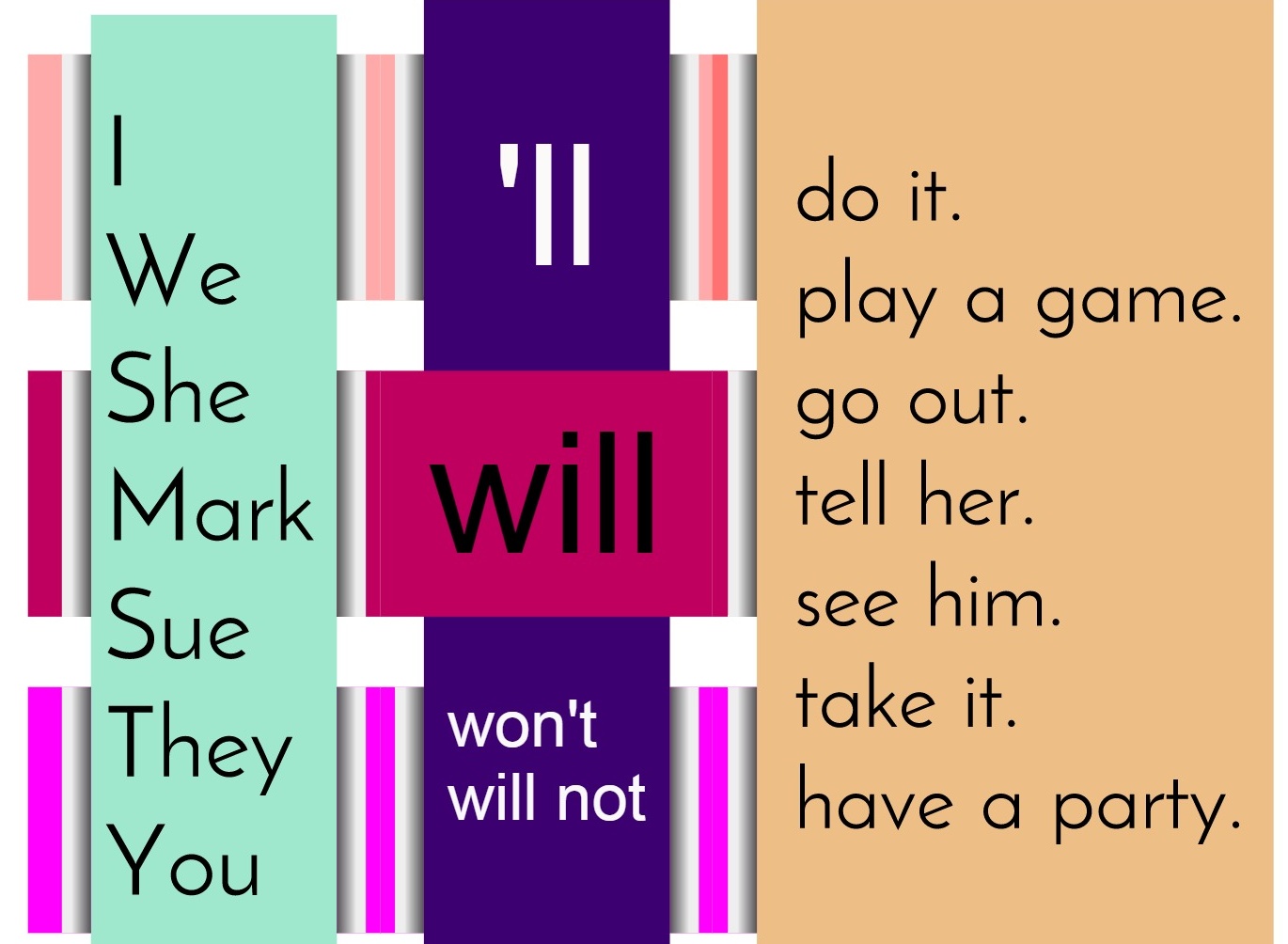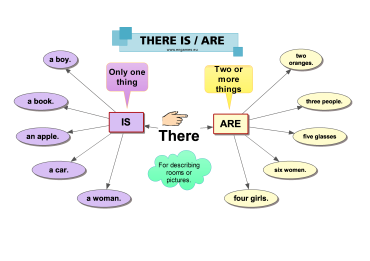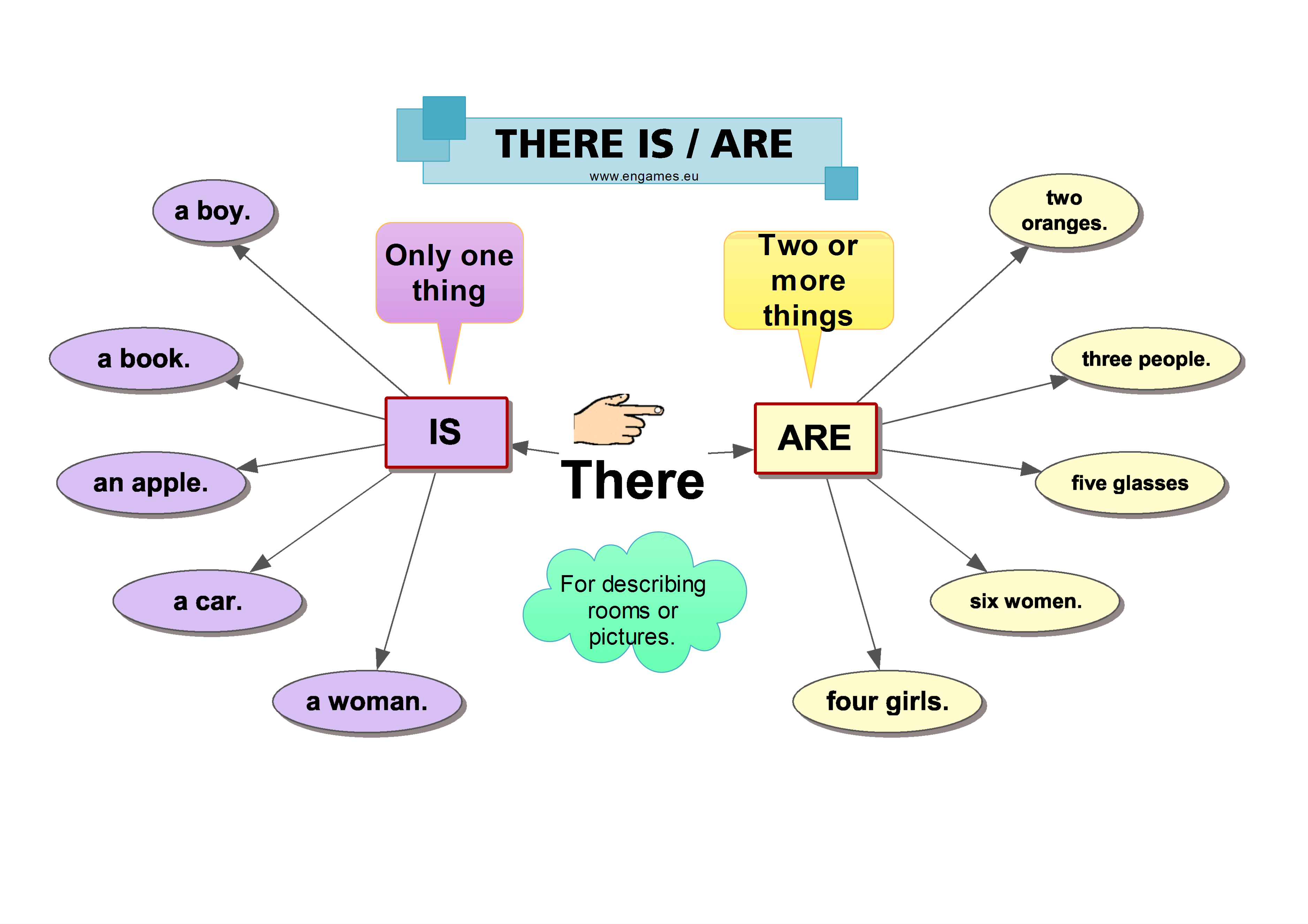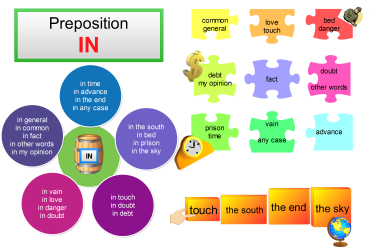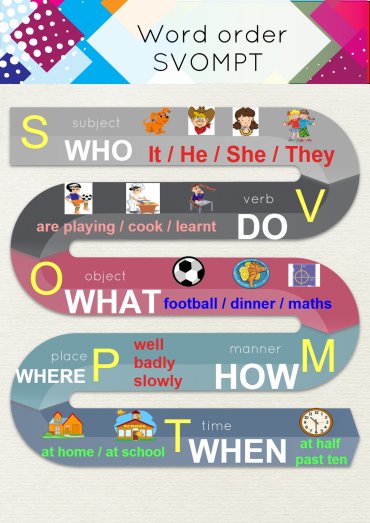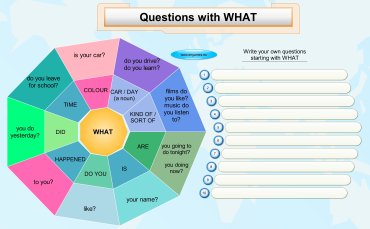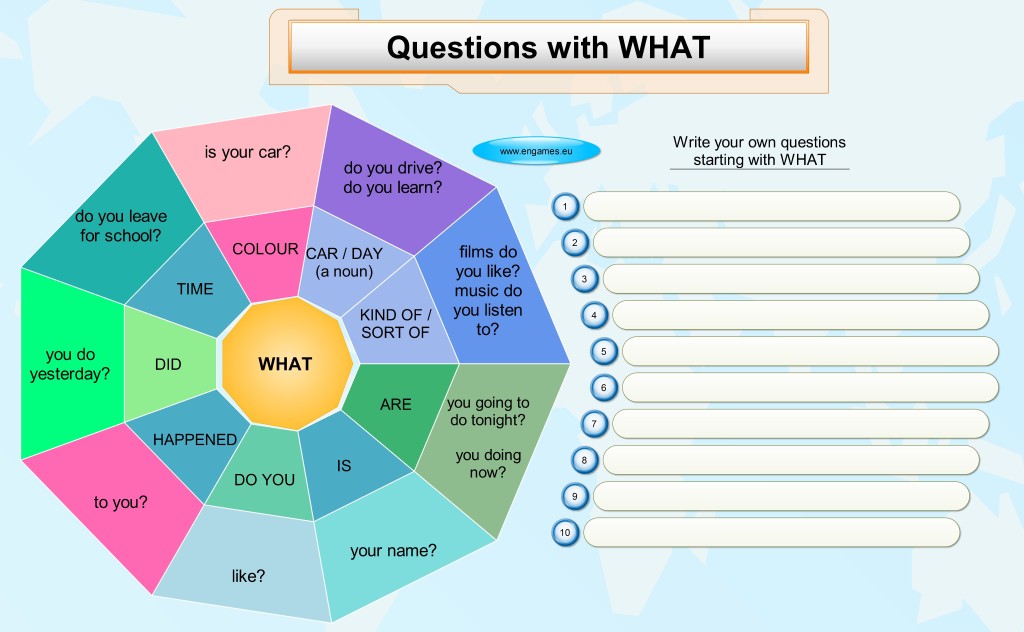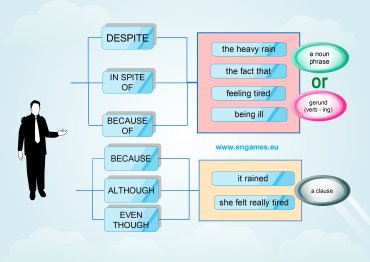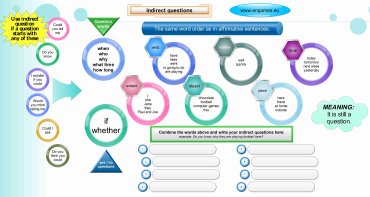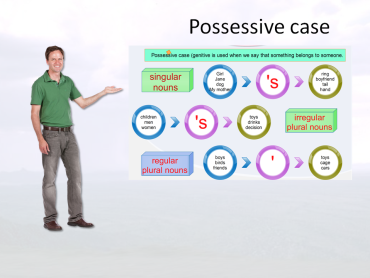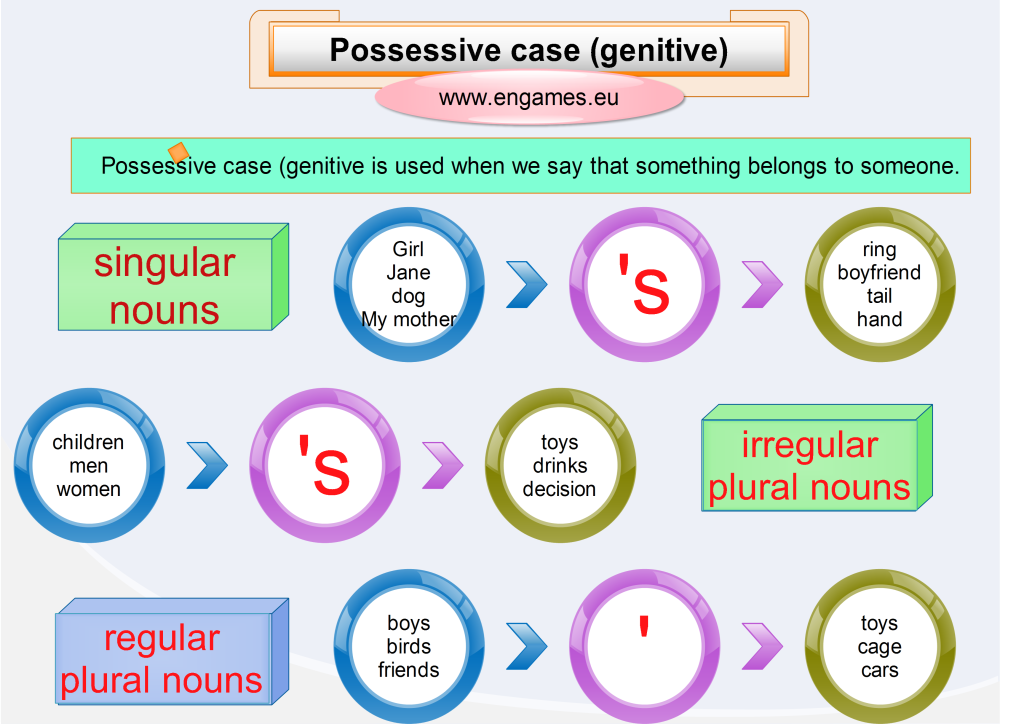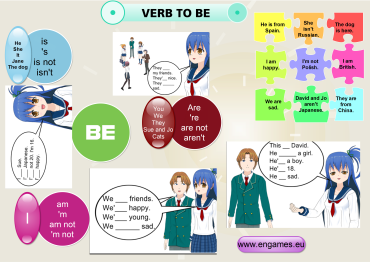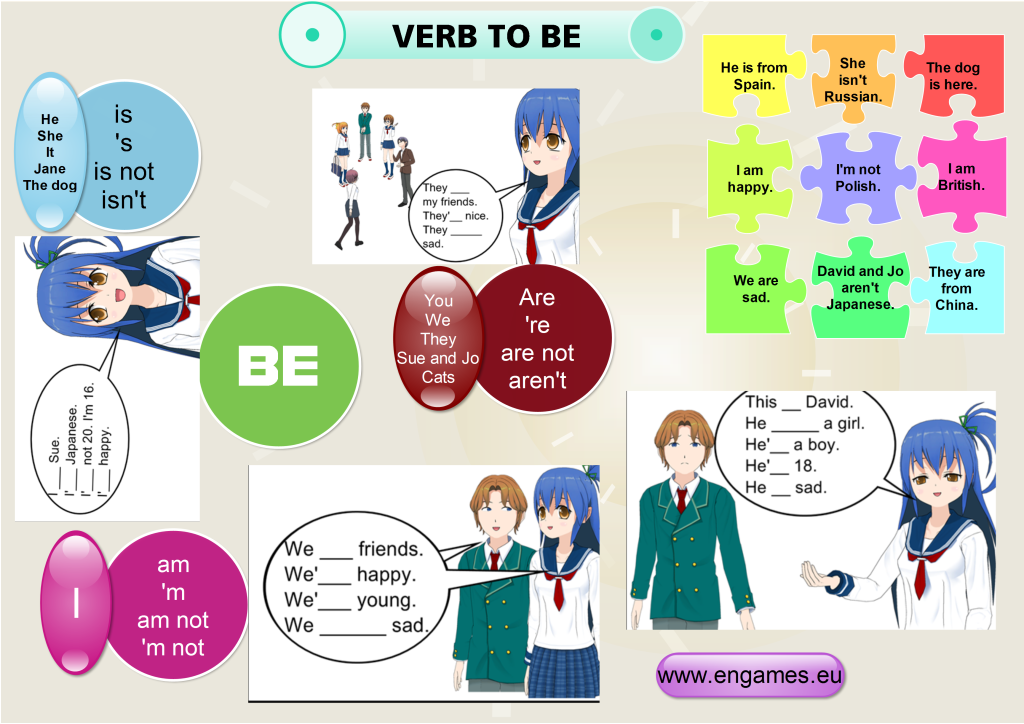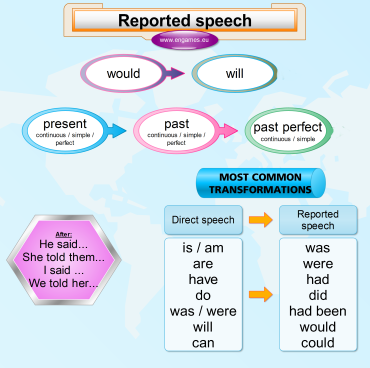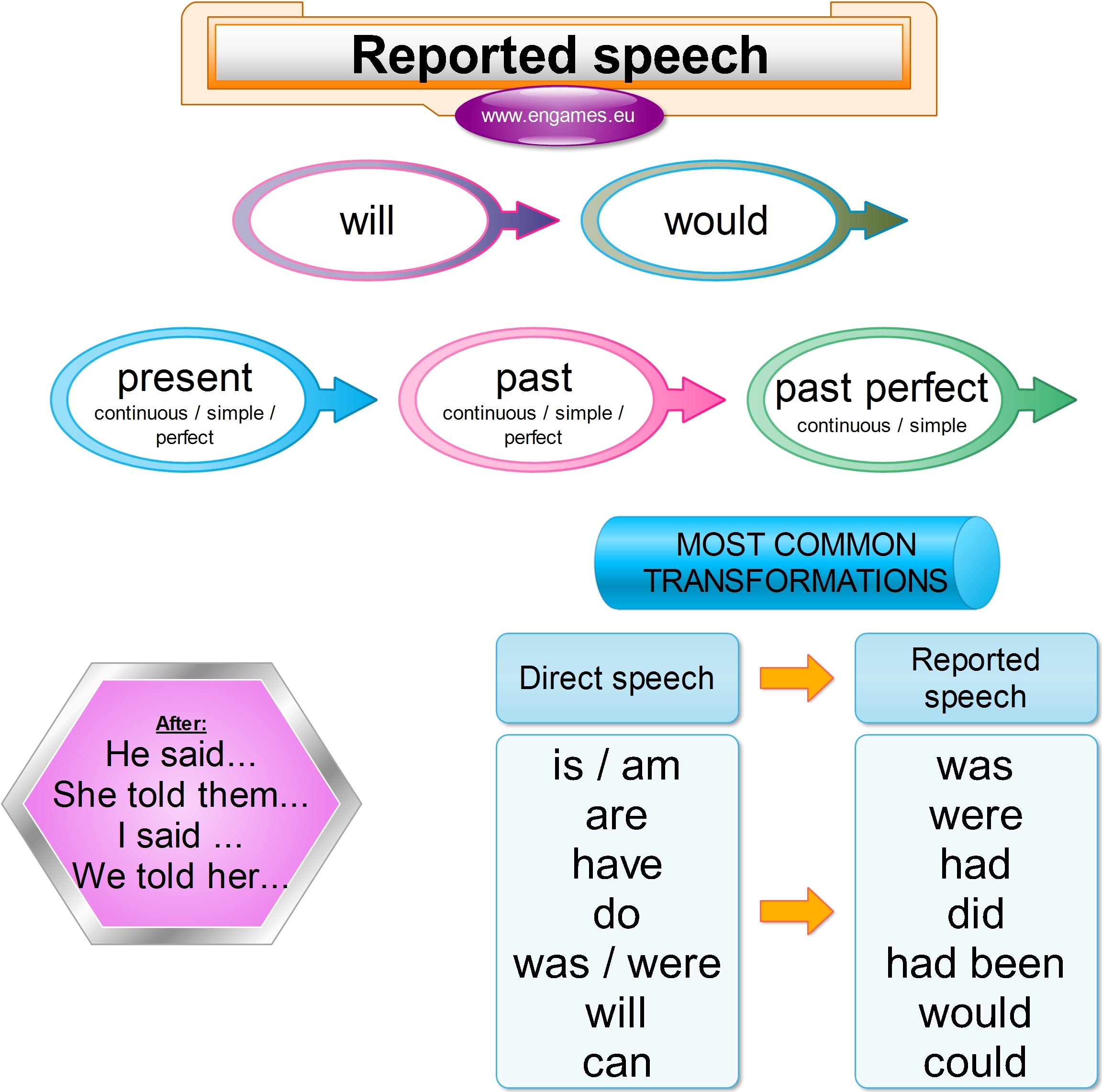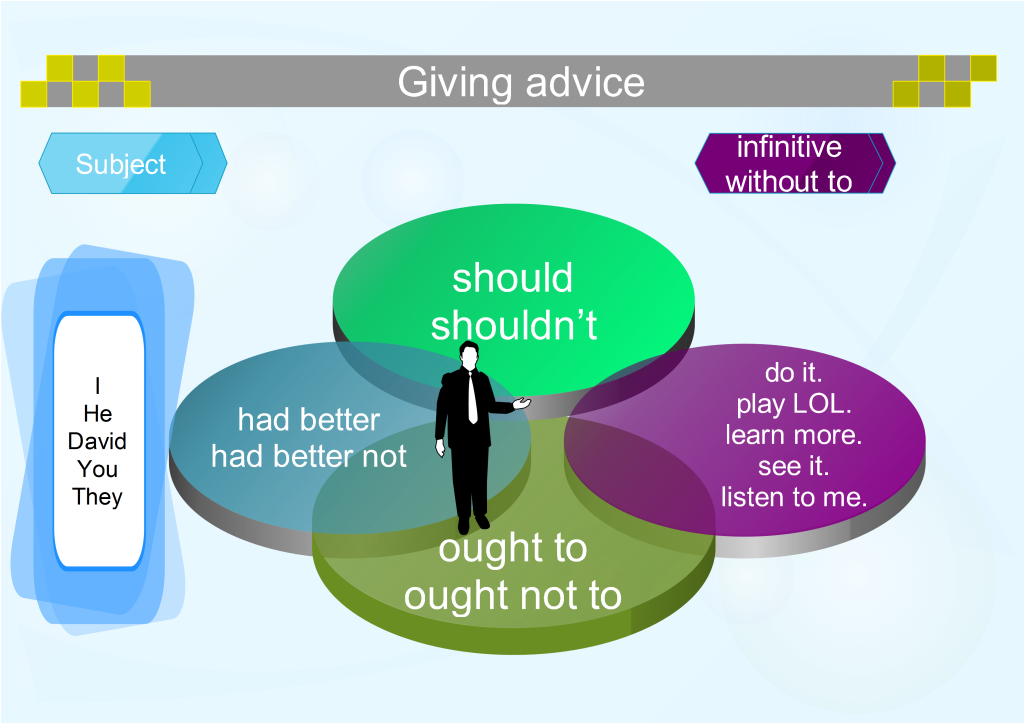Recently I have felt that my lessons are not language rich. And that is something no EFL teacher is happy about.
For example, I have been teaching questions to my fourth graders. We learnt all the vocabulary and grammar, but when I asked my students the questions, they were not able to answer. They did not understand the questions even though they knew all the words and grammar.
ADVERT:
[showmyads]
In this post, I provide a series of entertaining activities in which students can practise and come to understand simple questions.
Vocabulary

Do not forget to explain the phrase “the biggest” as there is no picture for this word.
Memory test game
Ask the students to check their answers at the end of the video. Find out who remembered the most in your class and reward them.
The memory game
ADVERT:
[showmyadsa]
Memory test grammar – full screen
Display the pictures at the end, and ask your students to write their own questions. Then ask them to work in pairs and ask their partner the questions.
The past continuous tense is one of the most graphical tenses in English. By “graphical” I mean that it is easy to demonstrate the difference between the past simple and past continuous tense in a video or in a short dramatic sketch. Unfortunately, I could not find a video demonstrating the difference betweent the two past tenses, and that is why I created one myself.
ADVERT:
[showmyads]
In addition to this video I created an infographic and an online quiz to practise the past continuous tense.
Past continuous – infographic
First, concentrate on the form. Explain that the students have to use the verbs WAS or WERE and the verb ending with -ing. Then explain how the negative and questions are formed.
If your students cannot create the -ing form properly, refer to the following post on the present continuous tense, which shows how the -ing verbs are formed.
Once you get to the usage of the past continuous tense, play the video. Play it twice and the second time stop the video and highlight the differences in the scenes and the tenses.
Past continuous – online quiz
If you want to play the online quiz in full screen click the button below.
Past continuous – online quizOr you can use the flash version here:
Past continuous – online quizPast continuous – share
ADVERT:
[showmyadsa]
Past continuous tense download
Past continuous tense – links
There is also a good discussion of the past continuous tense at the British Council site.
And the last link is to the BBC Learning English site.
When students start to learn English as a second language, there is a set of basic questions in English they need to master. All language courses start with these questions, but many people struggle to learn them. It is necessary to learn these by heart. However, you also need to be able to vary them a bit.
To help you teach or learn these questions I have devised the following activities: a mind map showing the basic questions for students of English as a second language, a worksheet with several communicative and drilling exercises, a song to help in memorising the questions and an online quiz. If you like the activities, please do not hesitate to comment below.
Basic question – song
Ask the students to listen to the song and complete the following worksheet:
Song lyrics fill-in
Play the song twice and then play the song on a whiteboard and ask the students to check their answers.
Basic question – mind map
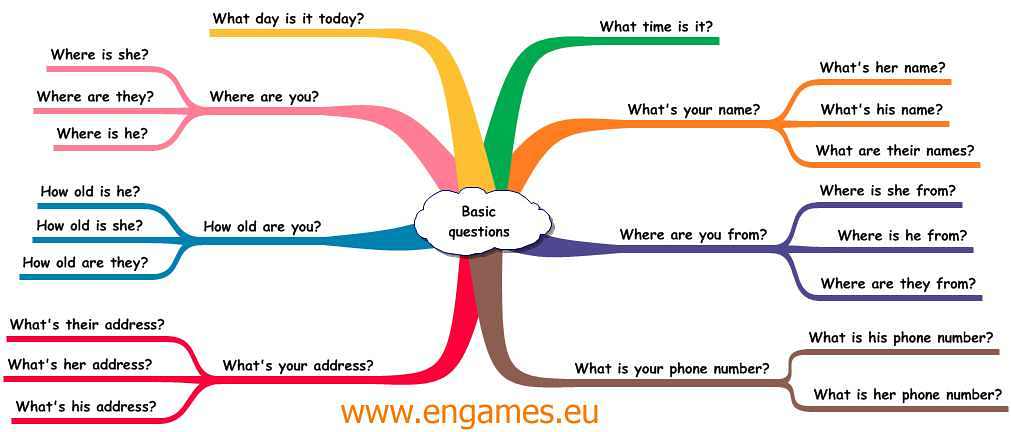
Ask the students to work in pairs and ask each other these questions.
Basic question – worksheet
Ask them to find the questions for fields 1-7. Check their answers. (It is best to display the correct answers for both groups).
Have your students work in pairs (worksheet A and worksheet B). Ask them to ask the questions and complete their worksheet.
The next task is pure text manipulation. The students should fill in the missing words.
In the third exercise, students should put the words into the correct order to form questions.
In the fourth exercise students are given the answers, and have to write the questions.
In the last exercise students should write the questions using different pronouns.
Basic questions – communicative activities
Basic question – online quiz
Then they should complete the questions. The online quiz is in HTML5 so it will work on all mobile devices. Students can practise wherever they like. Basic questions – online quiz
The second online quiz is in Flash and will play only on desktops. The aim of the game is to choose the correct question and then hit the opponent.
Basic questions – En garde gameBasic questions – download
I have already created two posts on the difference between the present simple and continuous tenses. There are Present simple or present continuous tense – improved and Present simple and continuous tenses posts. Both of them are good but as I have come up with a new idea, I want to share it with you in this post.
This post concentrates on the difference between the tenses. If you are not sure about the form of the tenses, you should see the following posts first:
ADVERT:
[showmyads]
In this post there are just two activities: a worksheet and an interactive quiz. I hope that they will help you with teaching the difference between the tenses.
Present simple and continuous tense – worksheet
In exercise 2 they should complete the sentences with the correct names.
When they finish, it is time to explain the difference between the tenses. The present continuous tense is used to describe what the people are doing right now. However, when the students have a look at the rooms in their pictures they will see several objects there. For example, in the kitchen there is a basketball. James is not playing basketball now, but he plays it sometimes and that is why the ball is there.
You can go on like this with three or four more pictures. Then ask the students to complete exercise 3.
In exercise 4, students should take the picture and speak about it for 60 seconds without stopping or hesitating. Will they manage?
In the last exercise, ask the students to turn the paper over and write 10 sentences about it.
Present simple and continuous tense – worksheet
Present simple and continuous tense – interactive quiz
In the quiz students will practise the grammar they’ve learnt in the worksheet.
ADVERT:
[showmyadsa] If you want to have the quiz on the full screen click the button below.
Present tenses – Full screen
Present simple and continuous tense – more practice
If you need more practice, you could try the following pages:British Council page on present simple and continuous
Here are two useful videos:
Teaching irregular verbs can be fun. The verbs are easy to use to tell stories and stories are interesting for everyone.
In the following post I am going to tell a story and you can learn the past tense of ten irregular verbs there.
ADVERT:
[showmyads]
To achieve this there are a video, a worksheet, a comic and an interactive quiz. I hope you will find them interesting.
Scream story – video
If you prefer telling the story yourself, you can use the following comic:
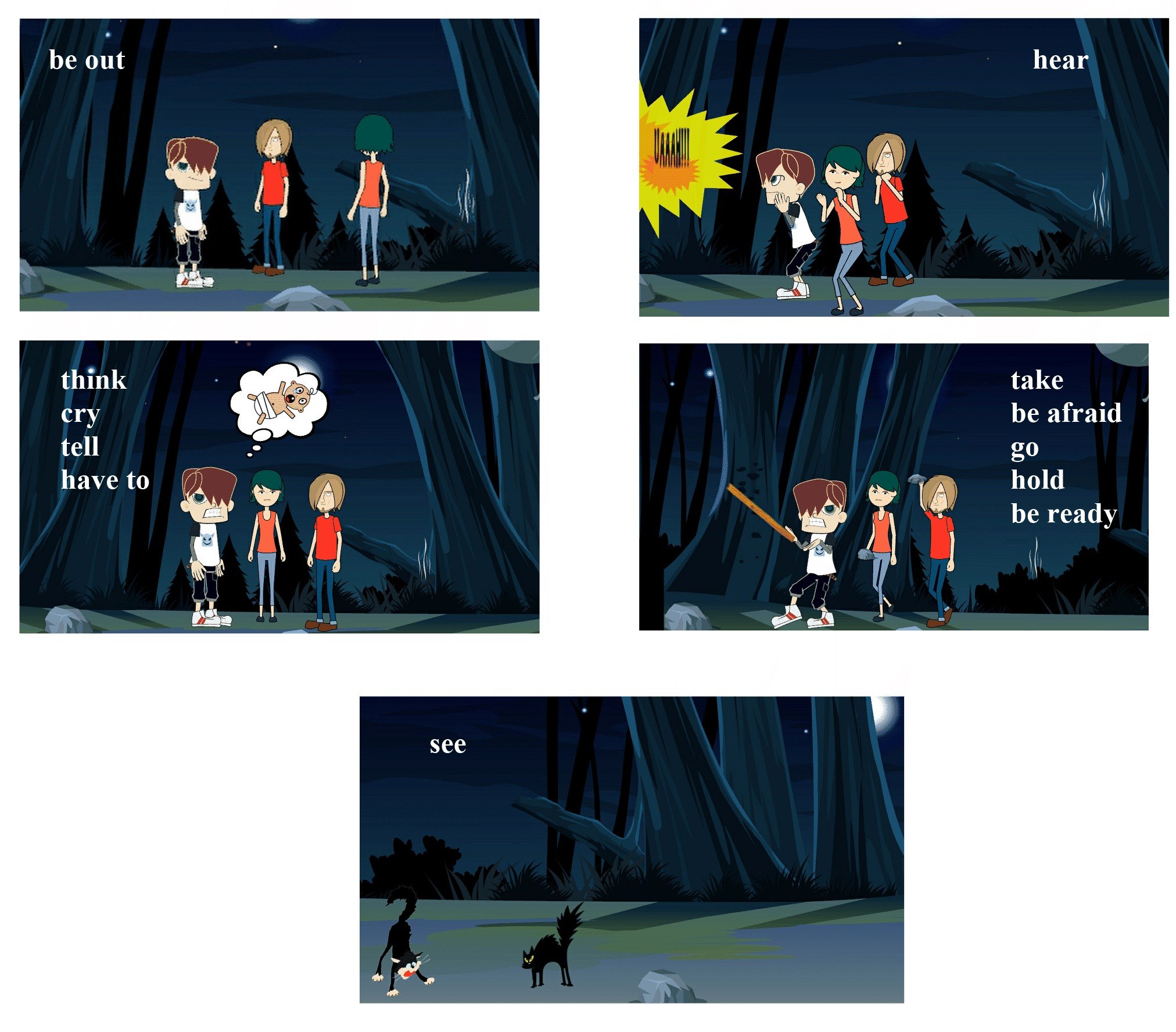
Scream story – worksheet
Then ask the students to complete the text and in the end ask them to solve the crossword. Once they solve the crossword using the past tense ask them to work in pairs and retell the story using the comic.
Past-simple-story_scream_original_ws_better
Irregular verbs – interactive quiz
If you want to play the quiz on the full screen, click the button below.
IRREGULAR VERBS SCREAM STORY
Irregular verbs – share
If you like the quiz above and you would like to share it on your blog or use it in a classroom without an internet connection, you can do this. You can download all the files here and upload them to your site just unpack the files and use them in the classroom:
ADVERT:
[showmyadsa]
Scream
Irregular verbs – more resources
Irregular verbs in context
Teach 9 irregular verbs in context
Several videos:
Other sites:
British council site
Learn English for teenagers
Today I experienced the great teaching moment when one of my not so proficient students said that she can understand the grammar perfectly and that it is really easy. I was exalted.
I was teaching present continuous tense and the students really liked it and at the end of the lesson they were able to form the affirmative sentences correctly. In this post I would like to share all the activities I used to achieve this. There are an infographic explaining the grammar, a worksheet and an interactive quiz. I hope you will like it.
ADVERT:
[showmyads]
Please, if you spot a mistake leave a comment and I will try to correct it as soon as possible. Thank you.
Present continuous tense – worksheet and infographics
Once we check the exercise 1, I hand out the following infographic and ask the students to go through it and then I explain it.
When I finish my short explanation I ask the students to complete the exercise 2 in the Present continuous affirmative_worksheet. We check the answers and then I explain the addition of the -ing ending. And then the students have to do the exercise 3. Here they add the -ing ending to the verbs.
In exercise 4 the students are asked to write what the people and animals are doing in the pictures. Remind them not to forget the correct form of the verb TO BE in each sentence. In exercise 5, the pupils finish the sentences in a logical way using the present continuous tense.
At the end of the lesson I asked my students to work in pairs and describe the picture we used at the beginning of the lesson.
It worked for my class. Will it work for yours?
Present continuous tense – interactive quiz
ADVERT:
[showmyadsa] Once we finish the exercises at school you can ask your students to practise the grammar at home. They can try to do the following interactive quiz. If they pass it they will be given a chance to play a game. The quiz is in HTML5 so it will work on all mobile devices. Present continuous tense quiz – full screen
You can expand your knowledge about present continuous tense at British Council pages.
Present continuous tense – share
About half a year ago I published a post where I tried to explain the usage of 5 different tenses. About 71,000 people have viewed this post but several complained that there was not enough practice. That is why I have decided to reintroduce this topic and add three more quizzes to practise the five tenses. So here we go!
Five tenses – mind map
ADVERT:
[showmyads]
And if you think you understand the grammar, it is time to try the quiz.
Five tenses – quiz
You can download the word document here and you can edit it in any way you like. The key is included.
If you prefer the interactive version of the same quiz, you can find it down here.
If you would like to do more practice, you can go to British Council site and try several more exercises there.
There are many different ways to speak about the future in English. You can find all of them in the previous posts on future tenses at Will or be going to or at Be going to post. In this post I would like to explain and teach the usage of WILL for speaking about the future. You are going to find a mind map, a story about WILL and several interactive exercises here. I hope you will find this post useful.
Will for the future – mind map
ADVERT:
[showmyads]
Once you present the form of the verb WILL it is time to explain the usage. I prefer using stories when explaining the grammar. I do it this way because stories are more memorable than just a simple explanation. You can create your own story or you can use mine. If you are afraid that your students´ English is not good enough you can tell the story in their Mother tongue.
The story about WILL
He looked like a normal boy but he wasn’t. He irritated people with his behaviour. He simply talked too much
For example when he was at school he always wanted to help other people. But while other children helped without any words WILL always spoke.
“I, Will, help you, sir,” he shouted when he saw the teacher carrying a lot of things.
“I, Will, clean the board,” he jumped up another time.
Of course, his friends did not like it and soon they started to say ironically.
“I will do it.” or “She will do it.”
As I say, Will talked too much. And he liked talking about his opinions.
“I think …” were his favourite words. And as children did not like him they soon parroted.
“He thinks it WILL rain.” “I think I WILL earn a lot of money.“
And one day another strange thing happened. Will’s eyes went big and he started to predict the future.
“There be people on the Moon. We fly to Mars.”
But children did not believe him and they laughed even more.
“There WILL BE people on the Moon. We WILL fly to Mars,” they screamed all over the school.
Nowadays no one remembers Will or his behaviour at school but ever since people still say “I will do it,” when they decide at the moment of speaking to help anyone.
We still say “I think she will fail.” when we express our opinions about the future.
And when we predict something we say “People will not use tablets in 10 years time.”
No one remembers the nerd WILL but his name is there in the sentences.
WILL for the future – practice
You can watch a bit different video explanation the usage of the will form here:
Once you think your students understand the grammar you can try the following quiz:
WILL for the future – leave a comment and learn
WHAT DO YOU THINK THAT WILL HAPPEN IN THE YEAR 2015.
Write your opinions into the comments and I will correct them and inform you about your grammar.
WILL for the future – share
If you do not have the internet connection in the classroom you can download the quiz and presentation here. Moreover, you can place these at your blog or website 🙂
ADVERT:
[showmyadsa]
Please rate this post below. Our previous post on adverbs of Frequency scored 4.49 stars. Do you think this one is better?
The basic explanation of the usage of the phrase THERE IS / THERE ARE is easy to understand and practice. My students caught on very quickly and then used the phrase without any mistakes. However, you might need to teach the plural first to allow the students use these without any mistakes.
In this post there is a clear mind map which even 9 years old managed to understand, a worksheet and two games to practice the grammar.
There is / There are – mind map
- It is used to describe a scenery or picture.
- THERE IS A + one thing
- THERE ARE + more than one thing.
There is / There are – games and activities
The next two activities are interactive quizzes and games. Both of them are in HTML 5 and both of them will work on any mobile device.
In the first quiz you should read the description and click on the correct picture. If you pass the test you can play the game Angry Finches.
In the second game you should write the missing words into the sentences to describe the picture on the left. If you pass this test you will be given a chance to play the game called Make them Fall.
Enjoy.
Category: Elementary, English games, Grammar
Prepositions are one of the favourite test items. They appear at tests like FCE or CAE and if you know them then you can get a lot of points. Moreover, if you use the prepositions correctly, people find it easier to understand you.
The aim of this post is to teach several high-frequency phrases starting with the preposition IN. There are two quizzes with games a mind map and a mnemonic to help you remember all the phrases.
Preposition IN – mind map
ADVERT:
[showmyads]
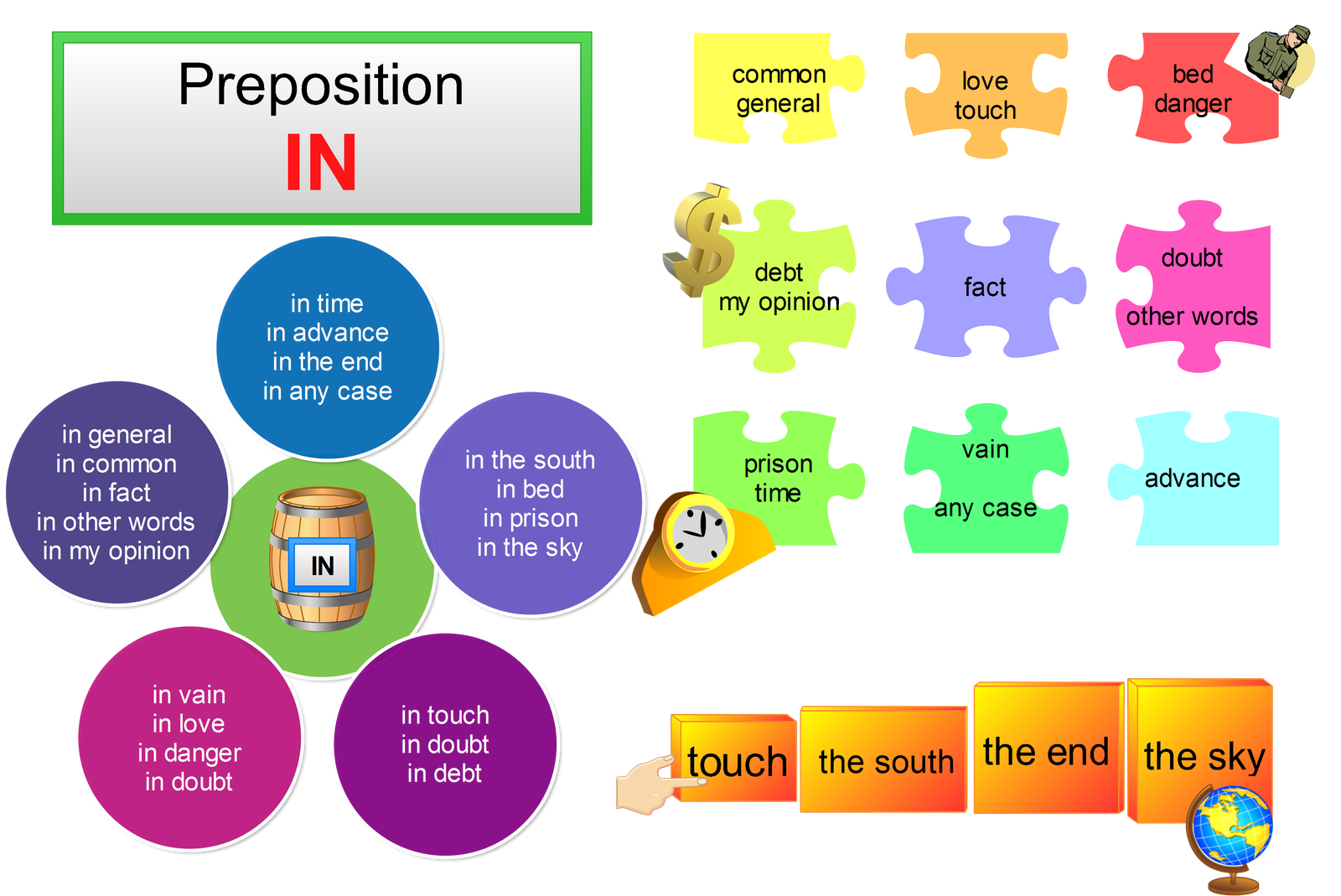
Some might find the lines on the right side difficult to understand. It should work as a mnemonic. It is much easier to remember 4 sentences than to remember 20 separate phrases. You should read the lines and imagine the picture. For example:
Common general like touch bed danger
Imagine a normal soldier who likes touching bed in danger.
In the same way try to remember the other three sentences. The sentence after the slash creates the image you should remember.
debt my opinion fact doubt other words / The debt in my opinion is a fact. Doubt other words.
prison time vain any case advance / Time in prison is spend in vain, but it passes in any case.
touch the south the end the sky / Touch the south end of the sky.
Anyway, once you remember these lines, do not forget that there is IN in front of them 🙂
Preposition IN – games and quizzes
ADVERT:
[showmyadsa]
The second game is a simple crossword. Complete the crossword with the phrases with the preposition IN. Again the game is in HTML5 and will work on any mobile device or desktop.
Phrases with the preposition IN – crosswordsCategory: English games, Grammar, Intermediate
I have already published several posts on past simple tense. There are several posts on irregular verbs, a post on regular verbs in past tense and now I would like to explain how to make negative sentences in past simple. It is quite simple – you just add DIDN´T and the infinitive. To help you and your students absorb this concept there are two games and a graphical explanation.
Past tense negatives – video
ADVERT:
[showmyads]
Past tense negatives – mind map
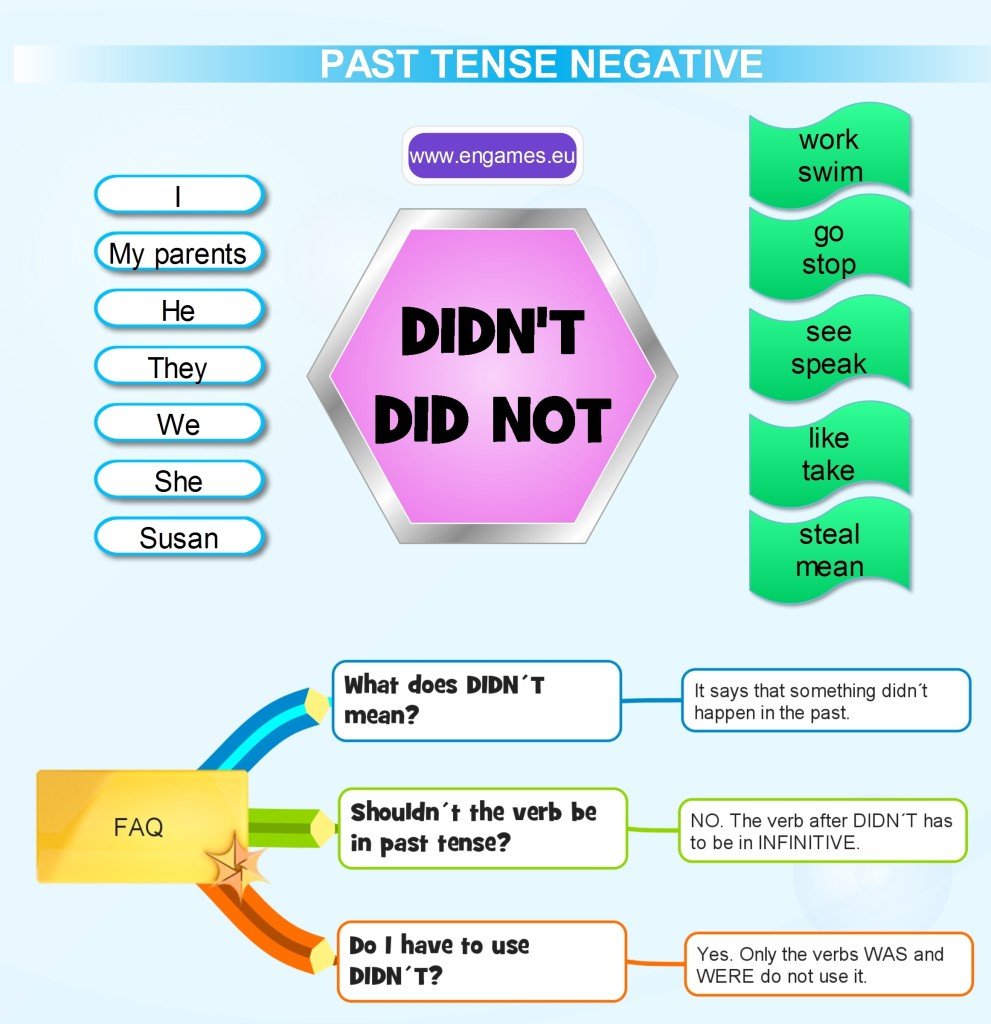
If you are a teacher it might be a good idea to let the students deduce the rules and complete the table. However, beware that this way of teaching is not suitable for weaker students.
ADVERT:
[showmyadsa]
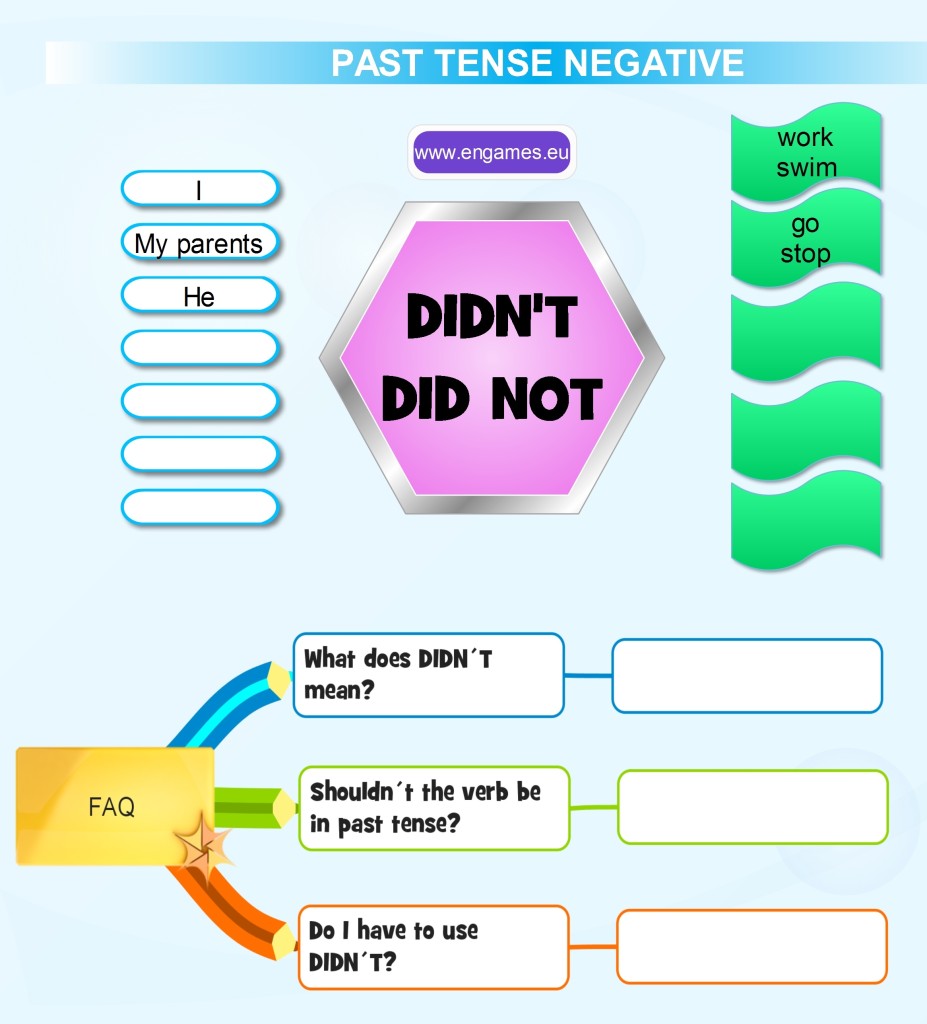
Past tense negatives – games
The first game is in HTML5. Your task is to choose the correct form and if you pass the test you will play the game called Tower defence. This game will play on all mobile devices.
If you want to play the game on the full screen, click below:
Past tense negative – Tower defenceThe second game will play only on your desktop. It is called a Penalty Shoutout and once you choose the correct option you will get a chance to kick a penalty. Will you score all ten penalties? Good luck.
Past tense negative – Penalty shootoutSVOMPT rule is one of the most important rules in English. If students learn to follow this rule, their English will improve dramatically, and they will be understood. Once a student knows some words and follows the SVOMPT rule, we can say that he/she can speak English.
ADVERT:
[showmyads]
I love Darren Crown’s explanation of the origin of the SVOMPT word order. In his humorous book “Angličtina na rovinu” he writes that English was first used by a primitive tribe whose members did not want to use their brain too much and thus they created a word order which is always the same – Subject, Verb, Object, adverbs of Manner, adverbs of Place and adverbs of Time. So let´s stop looking for some complicated explanations and let´s think like the primitive barbarians and stick with the SVOMPT word order.
SVOMPT – mind map
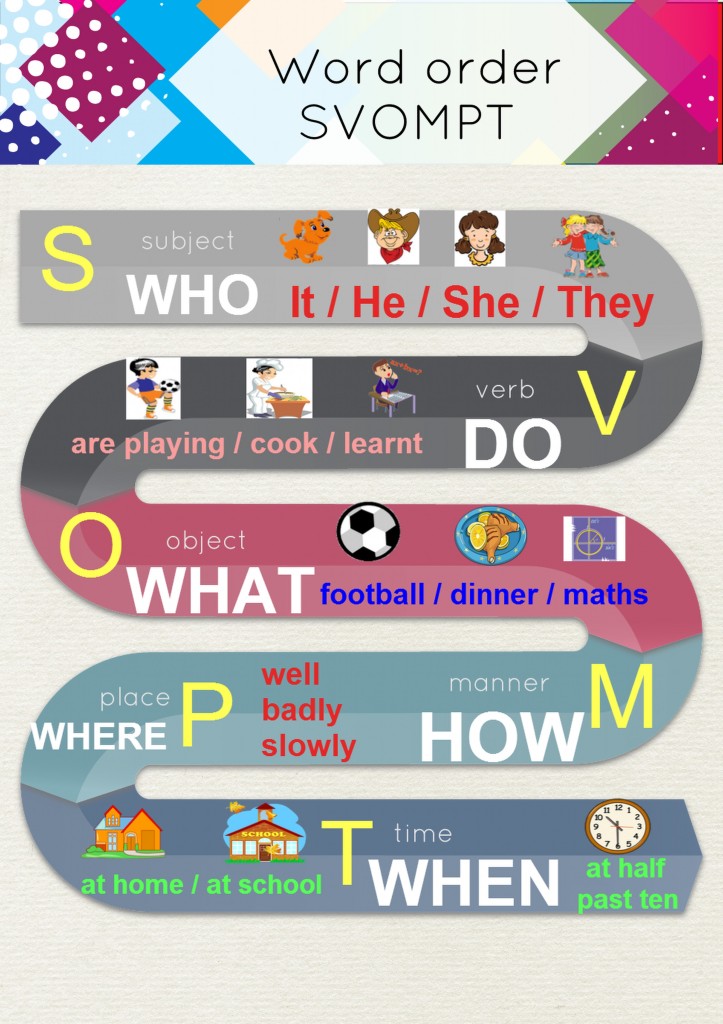
SVOMPT – games and quizzes
If you want to play the quiz on the full screen, click on the button below.
SVOMPT – what is this wordIn the second quiz your task is to put the sentence into the correct order. If you pass this quiz, you can improve your vocabulary in the game called Word Boggle.
If you want to play the quiz on the full screen, click on the button below.
SVOMPT – Arrange the sentenceBoth games and quizzes are in HTML5 so they should play on all mobile devices.
Our most popular post is about questions with HOW. There is another post on all the WH question words. In this post I would like to deal with the questions starting with the word WHAT. To help you with this grammar there is a mind map and two games.
ADVERT:
[showmyads]
Questions with the word WHAT – mind map
There are three set phrases which you should learn by heart: What happened? What is he like? and What does she look like?
The mind map clearly shows the usage of the word WHAT and it is designed in such a way that it can be used as a worksheet too. Your task is to write 10 correct questions starting with WHAT there.
Questions with the word WHAT – games
If you are using a mobile phone click here, to see it on the full screen.
Questions with WHAT – Mobile quizThe second game is in flash and it will play only on desktops. It is called Penalty and your task is to answer the questions and score. Could you be a professional footballer?? 🙂
Questions with WHAT – PenaltyIn this post I would like to teach you how to use the words DESPITE, IN SPITE OF, ALTHOUGH, EVEN THOUGH, BECAUSE OF and BECAUSE correctly. I will explain the meaning of the words and the grammar. To help you with this there are two games, a mind map, a video explanation and a graphical explanation. I hope you will learn to use these conjunctions.
ADVERT:
[showmyads]
Conjunctions – meaning
The meaning of these conjunctions is clearly explained in the following graphics:
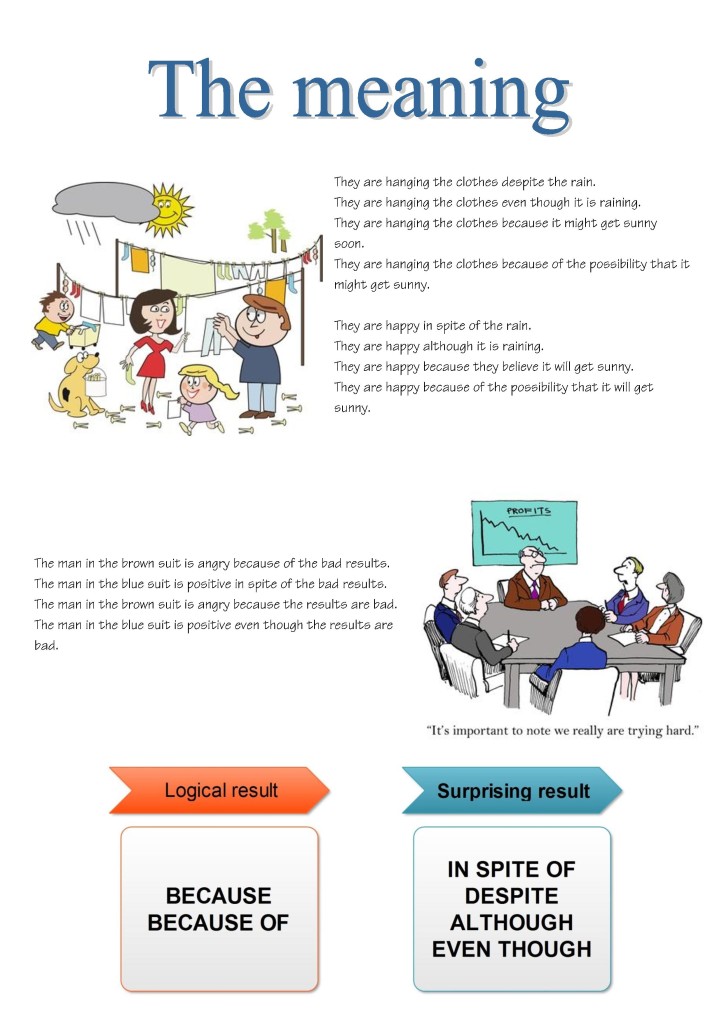
If you want to print out the graphic, you can download the pdf file below:
Conjunctions – the usage
You can see the explanation again in the following mind map:
To make it absolutely clear, here is an interactive video explaining the usage of the words BECAUSE and BECAUSE OF.
This video uses the free recording offered by BBC learning English at http://www.bbc.co.uk/worldservice/learningenglish/radio/specials/165_gramchallenge10/
To experience the video full screen click on the following button (as it is HTML5 video it will work on your mobile too):
BECAUSE – video explanation
ADVERT:
[showmyads]
Conjunctions – quizzes and games
The second quiz is fully in HTML5 so it will play on any mobile device you own. Your task is to connect both of the sentences into one and use the conjunction in the brackets. If you pass the test you will play the game called Math Pop and practise your Maths too.
Conjunctions – quiz and Math pop gameWhen students hear the phrase indirect questions, they get scared. But actually this is one of the easiest grammar points in English. The only thing you have to watch out for is that if a sentence starts with a certain phrase (Do you know or Could you tell me etc.) you have to use the word order for an affirmative sentence. To put it simply, after the aforementioned phrases do not make questions.
ADVERT:
[showmyads]
To help you master this grammar there is a mind map, a video and several games in this post.
Indirect questions – video
We recommend that you watch the video and stop the recording every time there is a task and answer the task before MASA does. It is a great fun and a superb way to learn English.
If you want to watch it full screen, click here:
Indirect questions video
Indirect questions – mind map
ADVERT:
[showmyads]
Indirect questions – games
The second game is in Flash and it will play only on your desktop. It is the notorious On target game. If you choose the correct option you will be given a chance to shoot the bad ducks. Moreover, you can get a bonus if you shoot one of the bottles on the sides. Enjoy.
Indirect questions On TargetVocabulary videos
You can learn the words connected with the environment at http://youtu.be/PbBR1sNc6C4
There is a vocabulary video introducing the Town features at http://youtu.be/5Plh_LBjwks
At http://youtu.be/c0T5j-5MEg8 you can learn some vocabulary to speak about Plants in English.
For young learners we have some names of Animals at http://youtu.be/wb6Ctlvz0Ys
If you want to learn more vocabulary on Sports you can go to http://youtu.be/14_5rLiIAm0 and learn the names of Winter Olympics sports
At http://youtu.be/9IWZb61DG1M you can learn Clothes Vocabulary
Furniture vocabulary is presented at http://youtu.be/7VOpE1n74h0
One of the most difficult parts for learners of English to learn are personal qualities.
To help you with this, you can try the video at http://youtu.be/3KisHI5O6WY
Category: English games, Grammar, Intermediate
EFL, English, ESL, games for indirect question, Grammar, grammar games, indirect question, indirect questions explanation, indirect questions grammar, indirect questions mind map, intermediate, intermediate students, learn, learn English, learning English games. English learning games., mind map, school, students, TEFL, TESOL
This is another post in my series of simple grammar explanations for elementary and beginner learners of English. In this post I try to explain the usage of the possessive ‘s and ‘. There is a mind map and several exercises to check the students’ understanding of the grammar.
Possessive case – mind map
ADVERT:
[showmyads]Possessive case – games
If you think you understand the grammar, it is time to check out your understanding in the following games.
The first game is in HTML5 and you can play it on any mobile device you like. Your task is to pass the quiz and if you get more than 70% of all your answers correct you will get a chance to play the game called Angry finches. Good luck.
Possessive case – Quiz (HTML5)The second game is in flash and it will play only on your desktop. Your task is to choose the correct option and then win the fencing duel against the computer. Good luck!
Possessive case – Embed
There have been several requests from people who wanted to share the games on their website. If you think that the html5 quiz is awesome and you would like to share it with the rest of the world on your site, you can do it by embedding the following code on your site:
<iframe src=”https://engames.eu/possessive case/Possessive case_sharable (Web)/index.html” width=”720″ height=”560″></iframe>
Vocabulary for learners of English
Grammar is really important if you want to learn a new language. However, vocabulary is the essence of a language. That is why we have come up with a new site to learn a lot of vocabulary. It is called envocabulary and you can find it at http://www.envocabulary.eu. Enjoy and learn.
Next school year I am going to teach low level students, so I started to prepare materials for them. The first one deals with the verb to be in affirmative and negative sentences.
The verb to be is the most important verb in English. You need it all the time. That is why solid knowledge of this grammar is vital. Spend your time learning this grammar it will pay off.
ADVERT:
[showmyads]
In this post you will find a mind map and two games for elementary students. I tried to limit the vocabulary, so even a complete beginners would be able to do the exercises.
VERB TO BE – mind map
ADVERT:
[showmyads]
VERB TO BE – games
If you are viewing the post on your mobile device, click on the button below to open the quiz in a new window, which is more comfortable.
The second game is in Flash and thus it will not play on your mobile device. The game is called on Target and your task is to choose the correct form of the verb TO BE and then shoot all the bad ducks. Do not forget that you can get a bonus if you shoot any of the bottles.
Many students struggle with reported speech. They feel that there are many rules they have to follow and they often get confused.
In this post I try to simplify the rules about the reported speech (or indirect speech) as much as possible. There is mind map describing the basic rules, a video and two games to practise the grammar.
ADVERT:
[showmyads]
To put it simply, reported speech is used when you start a sentence with an expression like She said or He told me etc. Then you have to move the verbs backwards. Thus you change the present simple tense into past simple. You change the past continuous to past perfect continuous and so on (see the mind map for more details).
Reported speech – video
Reported speech – mind map
First of all, reported speech happens after the reporting verbs (said, told, claimed etc.) in past tense. Then you have to move the original verb from the direct speech. The changes are depicted below.
The most common changes are depicted in the lower part of the mind map. If there are the verbs ARE, IS, WILL, CAN, HAVE or DO in the direct speech, just change them as shown and you do not have to do anything else.
ADVERT:
[showmyads]
Reported speech – games
Download the following pdf file and open it with Acrobat Reader, otherwise the game will not work.
The second game is a quiz. You will see the direct speech and your task is to complete the reported speech sentence correctly. If you pass the quiz you can play the game Indiara. All of these are in HTML5 so they should play on your mobiles without the slightest problem.
Recently I have published a post on giving advice. And our post on modal verbs won the British Council blog award. This post will deal with three ways to express the modal verb SHOULD. The different means are HAD BETTER and OUGHT TO. Both of these have the same meaning as SHOULD.
This grammar point often appears in FCE tests. So if you are planning to take an international certificate in English this post is really important for you.
OUGHT TO – mind map
[showmyads]
Once you learn the three forms correctly you should have no problem with using them. However, remember that SHOULD is much more frequent than either OUGHT TO or HAD BETTER.
SHOULD – games
The second game is a simple quiz. Your task is to complete the second sentence in such a way that it means the same as the first one. However, you have to use the word in the bracket in your answer. There are 16 sentences and if you pass the quiz you will be given a chance to play the game Indiara. Good luck 🙂
Category: English games, Grammar, Intermediate
Have you ever tried to memorise the following list of verbs to know when you should use TO and when the ending ING?
ADVERT:
[showmyads]
Honestly, I have never been able to commit the list to memory. And even when I thought that I know the verbs I was not really sure which form follows them. And my students had the same problem.
So I have written a post on verb patterns. But it did not work. The division of the verbs was too complicated.
And when I started to be desperate I read a short comment under a post on verb patterns. There the author described his simple rule which worked in nearly 100% cases.
The rule goes like this: “If the first verb happens before the second verb, use TO. If the second verb happens at the same time or before the first verb use the ending -ING with the second verb. For example: I want to go out. (First I want and then I will go out) She stopped smoking. (First she smoked and then she stopped.) He agreed to do it. (First he agreed and then he did it)”
Simple, isn’t it? However, you have to be careful as the rule does not work for the verbs suggest, pretend and fail.
Below you can see the idea in a mind map and lower you can test it in several games.
Verb patterns – mind map
Verb patterns – games
In the second game, you should complete the quiz and if you succeed you can play the game Rock, Paper, Scissors.

